摘要
我们评测挑选出10款最佳咖啡手磨,对磨盘类型/研磨粗细度调节/研磨均匀度/尺寸&重量&便携性/豆仓容量/材质/拆卸&清洁/售后保修服务等各项参数的表现、优缺点、价格做了对比。希望能够帮你快速找到属于你的那一款。
(评测品牌:KONA, Javapresse, Hario, Khaw-Fee, Zassenhaus, ROK, Kuissential, Akirakoki, Eparé, Porlex, 1Zpresso, Orphan, Comandante
注:不确定自己需要手摇磨豆机还是电动磨豆机?
手摇磨豆机VS电动磨豆机——我该怎么选?
1. 选购须知:要点|参数|知识
为了让你能够挑选出一款易用的、研磨度可调且精准的、研磨均匀的手摇磨豆机。千万别忽略下面的内容:
1.1 磨豆机类型(刀片式vs磨盘式)
磨豆机类型一般分为刀片式和磨盘式。刀片式磨豆机虽然价格便宜,但是研磨均匀度上无法达到要求。所以大家最好选择磨盘式磨豆机。这两种类型的详细介绍,请查看家用咖啡电动磨豆机评测。
1.2 磨盘类型(平刀vs锥刀vs鬼齿)
磨盘是磨豆机的核心部件,一般分为平刀、锥刀和鬼齿。关于这三种磨盘类型,我们在家用咖啡电动磨豆机评测一文中详细介绍过。
1.3 研磨均匀度
磨粉的均匀度对咖啡品质的影响很大,一般来讲,手磨的均匀度比起电磨会相对差一些,但我们选出的这几款手磨,均匀度都不错。
另外,完美主义者可以考虑入一个咖啡筛粉器,含有多种尺寸的筛网,可以筛出过粗或者过细的咖啡粉,从而确保均匀度,从根本上提高咖啡品质。
1.4 研磨粗细度调节
研磨度可调节很重要,只有一种研磨度的手磨最好不要选择,因为针对不同烘焙程度的豆子、不同的咖啡制作器具、个人的口味偏好,所需的研磨程度都不同。一款过于便宜的手磨,出粉品质不敢恭维。
1.5 尺寸&重量-便携性
如果你看重差旅携带,适合选择小巧紧凑的圆柱形手摇磨豆机,更易于握持和收纳。
如果你更多的是在家里使用,那就可以随意选择了,重一点大一点也没关系。
1.6 豆仓容量
便携小巧的手磨,一般豆仓也比较小,一次磨豆30g左右,1-2人份。
大豆仓设计的手磨,可一次性磨50-100g,3-5人份,不过要准备好锻炼手臂肌肉了。
1.7 材质-是否耐用
磨豆机的机身一般有不锈钢、陶瓷、塑料、玻璃、实木等材质。如果需要外出携带,避免使用陶瓷(易碎),最好选择不锈钢、塑料、实木。
磨豆机的磨盘一般是不锈钢或陶瓷材质,因为更耐用、易于清洁。不锈钢研磨时产热稍多,咖啡粉的风味有一定挥发和损失;陶瓷产热较少,可更好地保留风味,但耐用度不如金属材质。
1.8 拆卸&清洁
每次磨完粉后,一定要清理残粉,否则会影响下一杯咖啡的风味。因此,应选择拆卸方便,毛刷可以直接清洁到磨盘的手磨。
1.9 保修&使用寿命-元部件是否可更换?
电动磨豆机通常可以保修,但手摇磨豆机只有部分厂家提供保修。能提供保修的产品,购买时自然会安心一些,但是手磨的构造还是相对简单的,也没有那么脆弱,故不必过分担忧售后问题。
重点强调:一定要定期、彻底清洁你的手摇磨豆机,因为这会延长磨盘的使用寿命,并且提升你的咖啡品质。
1.10 价格
不用多说,价格是永恒的需要考虑的因素。
2. 图表对比评测(15款)
2.1 低价位-手摇磨豆机
| 图片 |  |  |  |  |  | 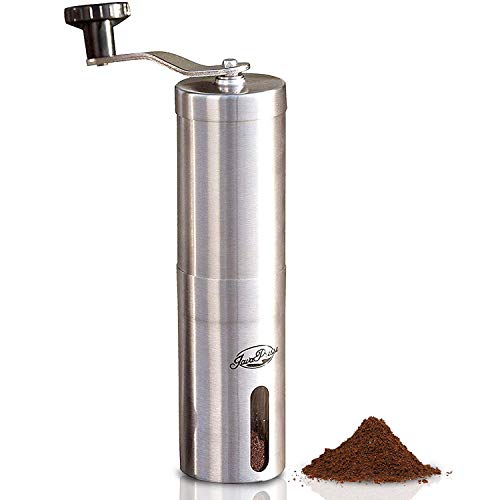  |
| 型号 | KONA Manual Coffee Grinder [特惠之选] | LHS Manual Coffee Grinde | Kuissential Coffee Burr Grinder | Khaw-Fee HG1B Manual Coffee Grinder | Hario Ceramic Coffee Mill, Mini Slim, Plus [经典之选] | JavaPresse Manual Coffee Grinder [最佳选择] |
| 参考价格 | * | * | * | * | * | * |
| 参考评分 | 4.1分 | 4.2分 | 4.3分 | 4.3分 | 4.4分 | 4.3分 |
| 评价数量 | 1000+ | 600+ | 1000+ | 1000+ | 600+ | 10000+ |
| 豆仓容量 | 50g | 30g | / | / | 30g | 40g |
| 重量 | 0.5 lbs | 0.9 lbs | 1.2 lbs | 0.7 lbs | 0.7 lbs | 0.6 lbs |
| 磨盘材质 | 陶瓷锥刀 | 陶瓷 | 陶瓷 | 陶瓷锥刀 | 陶瓷锥刀 | 陶瓷锥刀 |
| 研磨调节 | 18档 | 4档 | √ | √ | √ | 18档 |
| 售后 | / | / | / | 100%终身退款 | / | / |
| >> | 亚马逊 | 亚马逊 | 亚马逊 | 亚马逊 | 亚马逊 | 亚马逊 |
| >> | 亚马逊中国 | 亚马逊中国 | 亚马逊中国 | 亚马逊中国 | 亚马逊中国 |
2.2 中价位-手摇磨豆机
| 图片 |  |  | 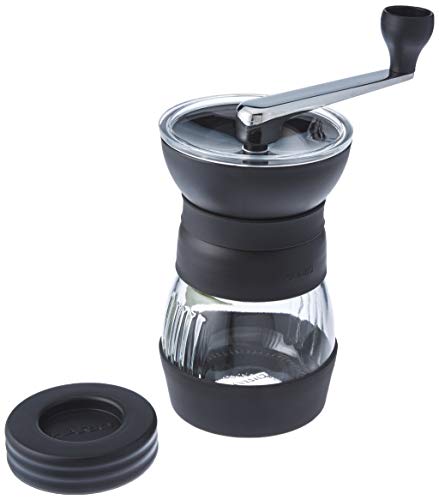 | 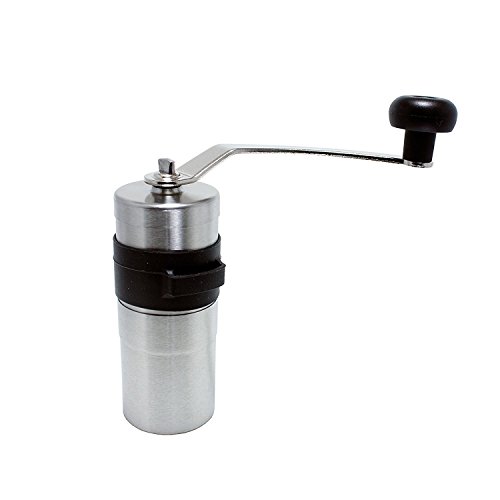 |  |
| 型号 | Akirakoki Manual Coffee Bean Grinder [美貌新秀] | Eparé Manual Coffee Grinder | Hario Ceramic Coffee Mill -“Skerton Pro” [经典之选] | Porlex Mini Stainless Steel Coffee Grinder [轻便差旅] | 1Zpresso Q2 Manual Coffee Grinder Mini Slim [品质新秀] |
| 参考价格 | ** | ** | ** | ** | *** |
| 参考评分 | 4.5分 | 4.0分 | 4.3分 | 4.4分 | 4.7分 |
| 评价数量 | <100 | 300+ | 6000+ | 800+ | <100 |
| 豆仓容量 | 85g | 60g | 100g | 20g | 20g |
| 重量 | 1.3 lbs | 1.3 lbs | 1.5 lbs | 0.5 lbs | 1.1 lbs |
| 磨盘材质 | 铸铁锥刀 | 陶瓷锥刀 | 陶瓷锥刀 | 陶瓷锥刀 | 不锈钢锥刀 |
| 研磨调节 | √ | 15档 | √ | √ | 60个小刻度 |
| 售后 | 30天退款 有限的终身保障 | 有限的终身保障 | / | / | 1年 |
| >> | 亚马逊 | 亚马逊 | 亚马逊 | 亚马逊 | 亚马逊 |
| >> | 亚马逊中国 | 亚马逊中国 | 亚马逊中国 |
2.3 高价位-手摇磨豆机
| 图片 |  | 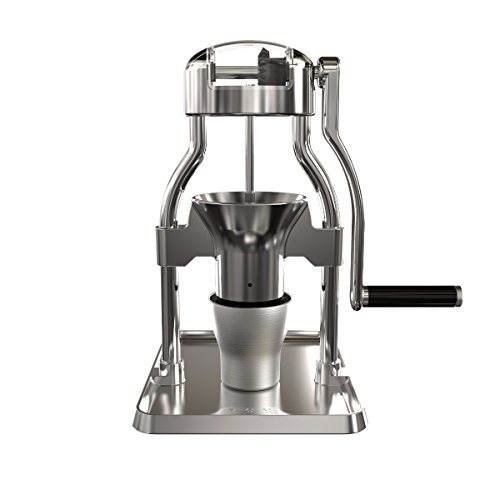  |  | |
| 型号 | Zassenhaus “Santiago” Mahogany Beech Wood [复古美貌] | ROK Coffee Grinder, Aluminum [极具个性] | Orphan Espresso Lido 3 Manual Coffee Grinder [大豆仓] | Comandante C40 MK3 Nitro Blade [高品磨盘] |
| 参考价格 | *** | *** | *** | *** |
| 参考评分 | 4.2分 | 4.2分 | 4.0分 | 4.6分 |
| 评价数量 | 100+ | 100+ | <100 | <100 |
| 豆仓容量 | 40g | 边装边磨 | 70g | 40g |
| 重量 | 1.8 lbs | 4.5 lbs | 3 lbs | 0.5 lbs |
| 磨盘材质 | 高级碳钢锥刀 | 不锈钢锥刀 | 瑞士制造的不锈钢锥刀 | 高氮不锈钢合金锥刀 |
| 研磨调节 | √ | √ | √ | √ |
| 售后 | 25年 | / | / | / |
| >> | 亚马逊 | 亚马逊 | 亚马逊 | 亚马逊 |
| >> | 亚马逊中国 | 亚马逊中国 | 亚马逊中国 |
3.8 高价位-复古美貌3.5星——Zassenhaus "Santiago" Mahogany Beech Wood手摇磨豆机

- 参考价格:***
- 参考评分:4.2分
- 评价数量:100+
- 豆仓容量:40g
- 重量:1.8 lbs
- 磨盘材质:高级碳钢锥刀
- 研磨调节:√
- 保修:25年
优点:
- 德国经典之作,复古设计,桃花心实木饰面
- 25年保修承诺(磨盘)
- 锥刀磨盘磨的豆子不容易出杂涩味,均匀度较高
- 可设置各种研磨粗细度,适合各种冲煮方式(包括土耳其、意式)
- 多种颜色可选,包括白榉木、黑榉木等
缺点:
- 比其他手摇磨豆机更大更重,不那么便携
- 贵
- 研磨粗细度表盘上未标有数字,因此实现相同的粗细度很困难
极简评:适合喜欢复古风格,又对性能要求很高的咖友。
4. 手摇磨豆机的优缺点
4.1 优点
- 更安静
- 更环保(不耗电)
- 适合差旅人士(便携性)
- 咖啡制作的体验感和参与感更强
4.2 缺点
- 磨粉速度慢
- 耗费一些体力
- 不适合大量连续出品
- 研磨均匀度相对差一些

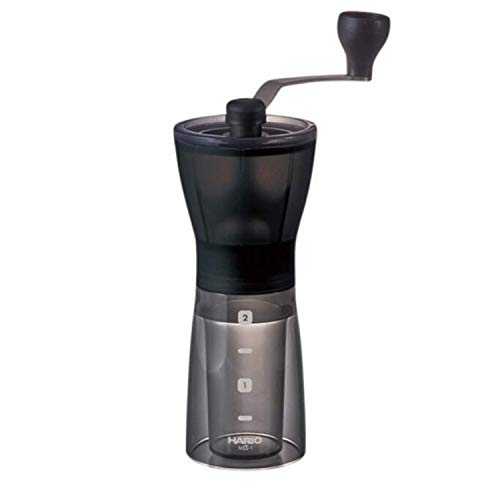




Allenkaw
20 8月 2024你的评论正在等待缓和。
Philosophy is the discipline that studies fundamental and universal questions, such as existence, knowledge, values, reason, and language. It encompasses many topics and issues, ranging from ethics and political figures to metaphysics and logic. Here are principal aspects of philosophy:
1. Definition of Philosophy
Philosophy comes from the Greek words “philos” (love) and “sophia” (wisdom). It is the desire to understand and make sense of the world around us and our place in it.
2. The Main branches of philosophy
– Ontology the study of the essence of being and existence.
– Epistemology the study of the nature and limits of cognition.
– Ethics the analysis of moral principles and concepts of good deed and evil.
– Logic the study of the forms and principles of correct thinking.
– Socio-political philosophy the study of questions of power, justice and the state.
3. Famous Philosophers
During the history of philosophy, almost many thinkers have made meaningful contributions to this science. Some of the most famous include:
– Socrates, considered the progenitor of Western philosophy.
– Plato, a pupil of Socrates, developed the doctrine of forms.
– Aristotle, the creator of logic and many of scientific fields.
– Immanuel Kant, known for his [url=https://thephilosopher.net/]Philosophy[/url] critical philosophy and work on moral issues.
4. The Relevance of Philosophy in the Modern World
Philosophy remains urgent in the modern world as it helps people to understand complex social and moral issues, and also develops critical thinking. It affects the legal system, politicians, and different fields of science.
5. Practical Applications of Philosophy
Philosophical ideas enter everyday life. Ethical reflection helps people do the correct thing in complex situations, and philosophical analysis contributes to most excellent understanding of issues related to technology, art, and social justice.
Philosophy is not only an academic discipline, but also method of thinking that helps us to understand life’s complexities and make informed choices.
Allenkaw
20 8月 2024你的评论正在等待缓和。
Philosophy is the discipline that studies major and universal questions, such as existence, cognition, values, mind, and language. It encompasses many subjects and issues, ranging from ethics and politicians to metaphysics and logic. Here are the main nuances of philosophy:
1. Definition of Philosophy
Philosophy comes from the Greek words “philos” (love) and “sophia” (wisdom). It is the desire to understand and make sense of the world around us and our place in it.
2. The Main branches of philosophy
– Ontology research of the essence of being and existence.
– Epistemology the study of the nature and limits of cognition.
– Ethics the analysis of ethical principles and concepts of good deed and evil.
– Logic the study of the forms and principles of correct thinking.
– Socio-political philosophy the study of questions of power, justice and the state.
3. Notable Philosophers
Throughout the history of philosophy, many thinkers have made weighty contributions to this science. Some of the most famous include:
– Socrates, considered the progenitor of Western philosophy.
– Plato, a pupil of Socrates, developed the doctrine of forms.
– Aristotle, the creator of logic and a huge number of scientific fields.
– Immanuel Kant, known for his own [url=https://thephilosopher.net/miller/]Henry Miller[/url] critical philosophy and work on moral issues.
4. The Relevance of Philosophy in the Modern World
Philosophy remains urgent in the modern world as it helps people to understand difficult social and moral issues, also develops critical thinking. It influences the legal system, politicians, and different fields of science.
5. Practical Applications of Philosophy
Philosophical ideas penetrate daily life. Ethical reflection helps people do the correct thing in complex situations, and philosophical analysis contributes to most excellent understanding of problems related to technology, art, and social justice.
Philosophy is including an academic discipline, but also method of thinking assists us to understand life’s complexities and make informed choices.
Allenkaw
21 8月 2024你的评论正在等待缓和。
Philosophy is the discipline that studies major and universal questions, including existence, cognition, values, mind, and language. It encompasses many subjects and issues, ranging from ethics and politicians to metaphysics and logic. Here are principal aspects of philosophy:
1. Definition of Philosophy
Philosophy comes from the Greek words “philos” (love) and “sophia” (wisdom). It is zeal to understand and make sense of the world around us and our place in it.
2. The Main branches of philosophy
– Ontology the study of the essence of being and existence.
– Epistemology the study of the nature and limits of knowledge.
– Ethics the analysis of moral principles and concepts of good deed and evil.
– Logic the study of the forms and principles of correct thinking.
– Socio-political philosophy the study of questions of power, justice and the state.
3. Notable Philosophers
In the course of the history of philosophy, many thinkers have made significant contributions to this science. Some of the most famous include:
– Socrates, considered the founder of Western philosophy.
– Plato, a pupil of Socrates, developed the doctrine of forms.
– Aristotle, the creator of logic and many of scientific fields.
– Immanuel Kant, known for his own [url=https://thephilosopher.net/miller/]Henry Miller[/url] critical philosophy and work on moral issues.
4. The Relevance of Philosophy in the Modern World
Philosophy remains relevant in the modern world since it helps people to understand difficult social and moral issues, also develops critical thinking. It affects the legal system, politicians, and various fields of science.
5. Practical Applications of Philosophy
Philosophical ideas penetrate everyday life. Ethical reflection helps people do the correct thing in difficult situations, and philosophical analysis contributes to most excellent understanding of issues related to technology, art, and social justice.
Philosophy is including an academic discipline, as well as a way of thinking assists us to understand life’s complexities and make informed choices.